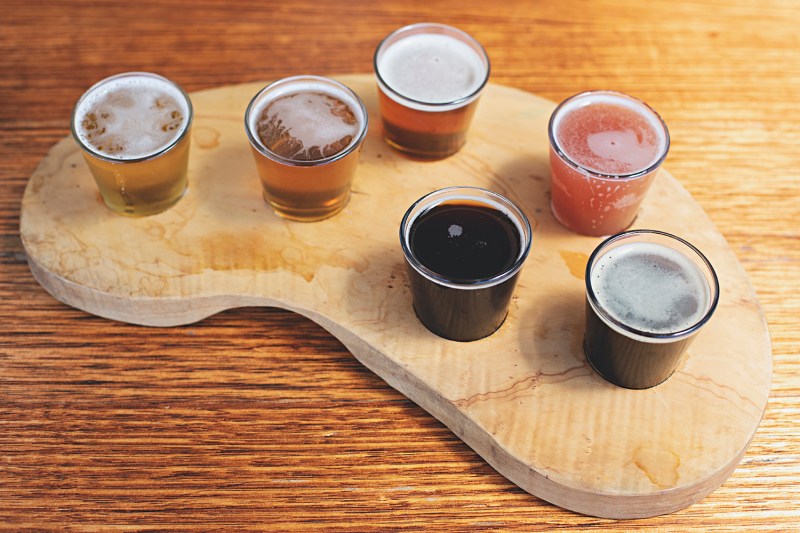
With thousands of amazing breweries spread across the globe already open (with more on the horizon) and a constantly expanding range of styles from which to choose, it’s impossible to drink all of the world’s great beers. Attending beer festivals or ordering flights from breweries are great ways to expand your knowledge and palate. These opportunities provide several small pours of beer instead of the traditional method of ordering full-size glasses. More variety for the same quantity, if you will.
An alternative to festivals and flights is organizing a bottle share, otherwise known as your own mini beer festival.
Bottle shares socially engage your local beer community (and help make room in your beer cellar). Many craft beer lovers become collectors, hoarding away favorite bottles for aging or special occasions. Calling up a few like-minded friends to engage in a weekend beer tasting is a perfect excuse to intermingle and tick a few new beers off your own must-try list, as every attendee brings some of their own personal stock to pour.
If you’re interested in organizing your own bottle share, here are five tips for planning your first event.
Make It a Party
While your initial instinct may be to keep your tasting group small, expanding the number of participants means that you’ll have more beers to try. Different attendees will have different passions. That forces you out of your comfort zone as you try beers that you typically might not search out on your own. A larger group of attendees also increases the number of rarities or beers acquired from regional travel and trades.
Hydration, Hydration, Hydration
Drink water. Drink lots of water. A good rule of thumb is to drink a full glass of water for every sample pour. This staves off the symptoms of dehydration such as headaches and stomach issues, as well as the ever-dreaded next-day hangover.
In addition to water, palate-cleansing snacks like unsalted crackers and mild fruit allow you to taste the next beer with a fresh tongue and something solid in your stomach.
Mix It Up
Keep things interesting by cultivating a bottle list that spans styles and geography. As the organizer, ask everyone what they plan on bringing in advance. That way you can help prevent duplication of bottles or too many beers representing the same style or the same brewery. The exception to this rule would be planning a themed party, such as Russian Imperial Stouts or beers from Oklahoma, for example.
Sequence is Important
When determining the drinking order for the beers, think about each beer as a song in an epic playlist. While traditional logic may indicate you should save the “best” or rarest for last, the fact of the matter is that your taste buds aren’t going to be as fresh at the end of the night. Start off with something exciting, put another big beer in the middle and, yes, finish strong. In between those key bottles, mix up the styles to keep everyone guessing.
Slow and Steady
A bottle share is not a race. Depending on the number of bottles being shared and the size of the pours, you will probably want to allot the majority of a day to slowly drinking through your supply. The goal here is to taste and enjoy these different beers. You do that by sipping slowly, taking notes and discussing the flavors with your peers.
When all is done, be sure to say thank you to both the newbie who brought a shelf warmer and the seasoned collector who busted out a rare, 10-year barleywine. We all have to start somewhere, and bottle shares are a great way to grow your local group and expand everyone’s knowledge.
Article originally published September 17, 2016.


